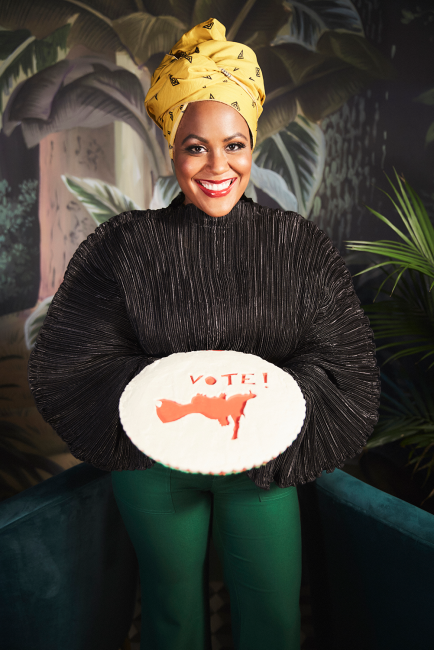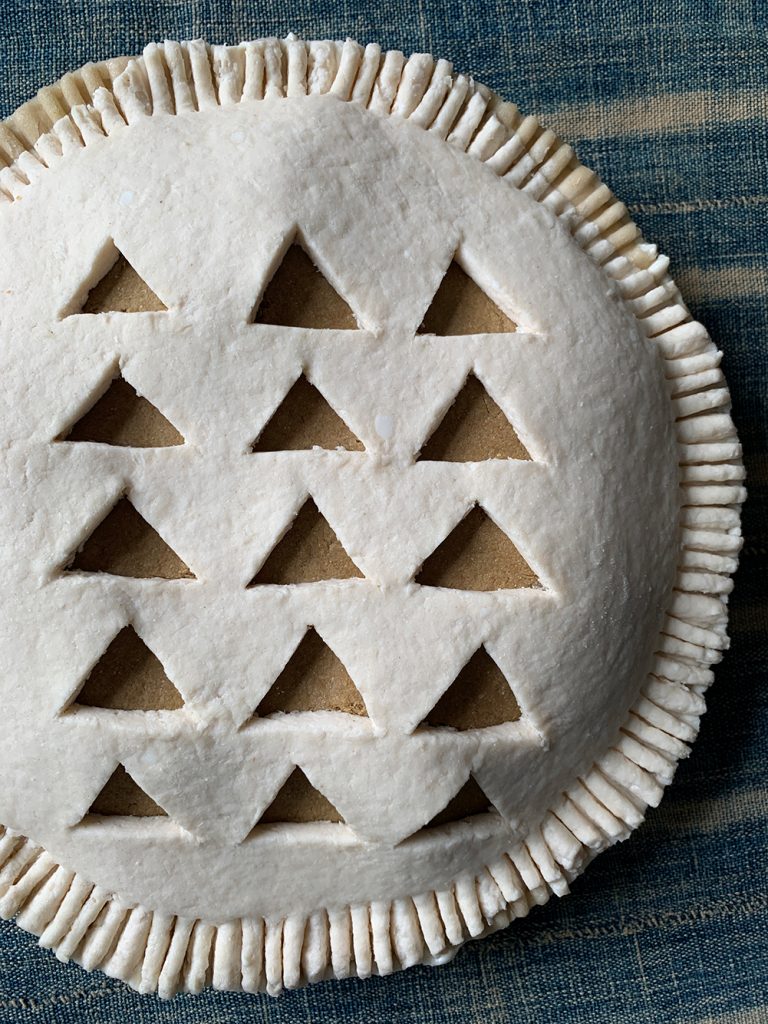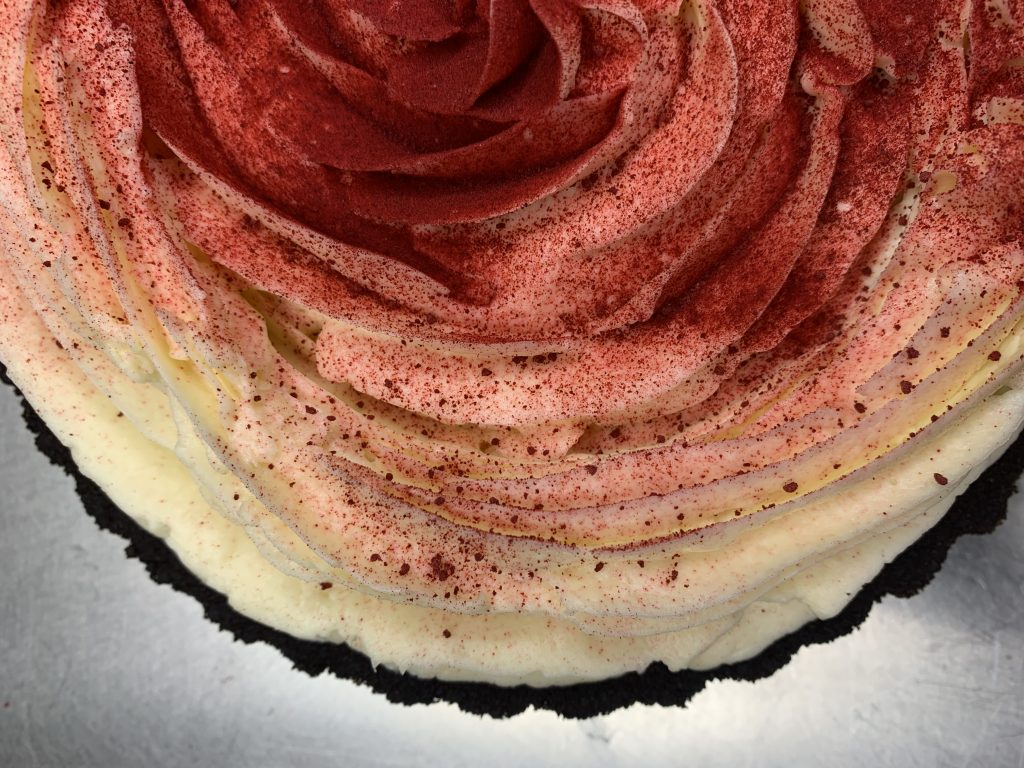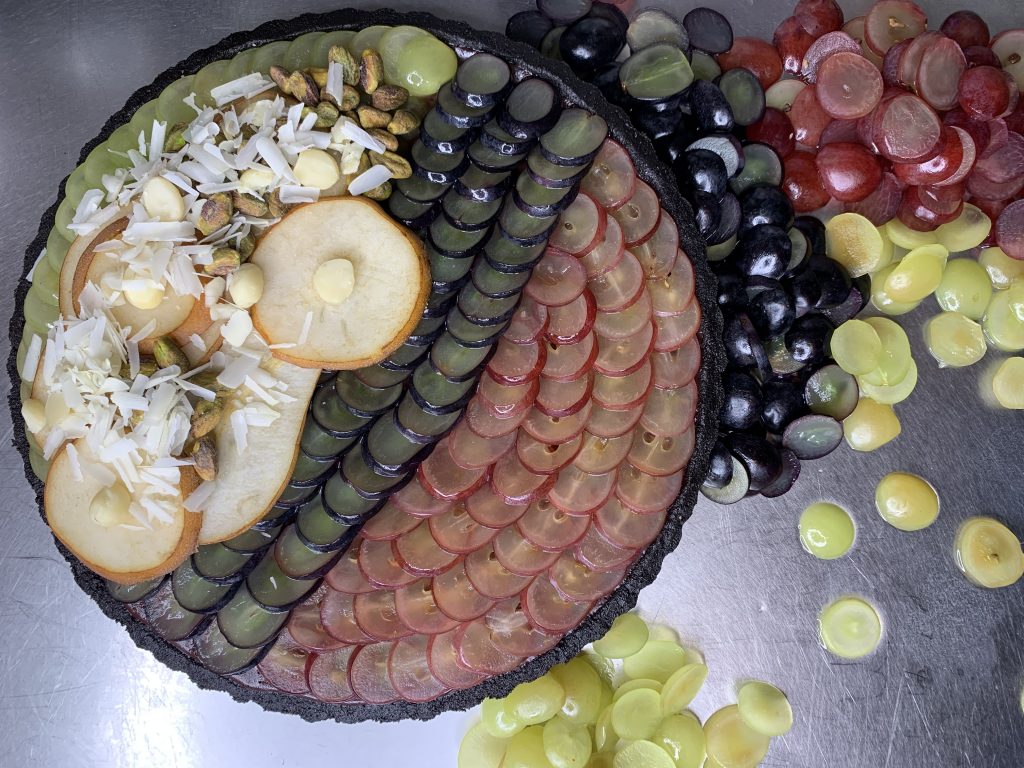Written by Education Outreach
February 25, 2021
Pie crusts have been a foundational part of cuisines across cultures for thousands of years. From humble empanadas to decadent tarts, the art and science of dough construction has been passed down from generation to generation, with each area of the globe having a slightly different take.
OVERVIEW
Tiffany-Anne Parkes, alumna of the then School of Journalism & Mass Communications who also took graduate classes in the Department of English, founded Pienanny on a pie crust recipe and a goal to harness what she identifies as the core pillars of culture – food, education and community – to promote cultural preservation and social change. Her culinary drive sprang from her artsy inclination to constantly experiment with new mediums and her genuine desire just to feed people.
Parkes has served up saucy humor and salivating dishes since 2016. Celebrating her Afro-Caribbean heritage in her kitchen, on her social media channels and with lucky local patrons, Parkes was recently selected for the I Fund Women of Color COVID-19 Grant Program, which was created with founding partner Caress to support diverse entrepreneurs.
BASICS
The science of a perfectly flaky traditional pie crust hinges on finding the right balance of its three core ingredients: flour, fat and water. But keep in mind, there are as many types of crusts as there are fillings. Pienanny’s African, Caribbean and European fusion led Parkes to create a range of sweet to savory riffs on the classic crust in addition to a variety of other styles.
Check out the dough recipe of her Jerk Turkey Shepherd’s Pie in Bon Appétit’s November 2020 issue for a list of ingredients along with step-by-step instructions and tips. Then scroll her social media feed for filling inspiration.

Photo courtesy Theodore Samuels



WHAT HAPPENS?
It’s the interaction of those main ingredients that can make or break the perfect crust. Everything from how much of each ingredient is used, to the water temperature, down to the mixing method, can impact the taste and texture of the final product.
Parkes’ tips for the perfect crust? Go slow and never make your chunks of fat too small. If it’s too small, the fat blends too much in with the flour and you don’t get the air pockets crucial to the chemistry of flakiness, Parkes says. Another thing to remember is temperature matters.
“When I first started, I was just in my apartment not a real pastry kitchen where the temperature stays low,” Parkes said. “I had to keep sticking the dough back in the fridge so I could work with it.”
SCALE UP
Don’t be intimidated if you’ve never experimented with food art before. Keep it simple.
“Be creative and work with what you know. When I first started, pottery was something I was already comfortable with, so when I started carving crusts, I used a clay scalpel, not a knife.”
Don’t be afraid to take risks, make mistakes and use familiar tools in new ways. A lot of Parkes’ early – and most captivating work – was constructed with just fruit. As for her design inspiration? A little bit of everything.
“I do a lot of archival work for stories and images. Right now, I’m looking at stamps from post-Emancipation, but also just inspired by the artwork of other pastry artists like Lokokitchen and Michelle Pfeiff Boschek.”
SHARE
Be sure to show off your successes, failures and adjustments along with the final product with @FIUCASE and @pienanny on social media.
Central to every house there is no better STEM classroom than the kitchen. From chemistry to biology to physics and beyond investigate the art and science behind culinary creations and everyday life. Follow FIU@Home on CASE News for more kitchen science.
Elaine Pritzker contributed to this article.